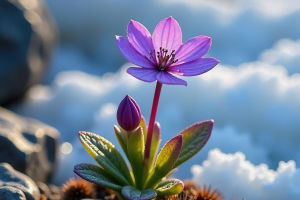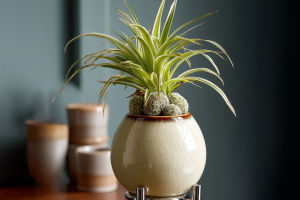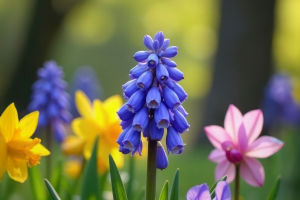We've all seen it—green leaves turning red, orange, yellow, or even purple. It usually happens in the fall, painting parks and forests in brilliant colors.
But have you ever wondered why some plants change the color of their leaves while others stay green? Let's explore the fascinating science behind this natural show.
Chlorophyll: The Green Power
To understand why leaves change color, we need to start with what makes them green in the first place. Leaves are green because of a pigment called chlorophyll. This pigment helps plants absorb sunlight and turn it into energy through photosynthesis.
Chlorophyll is powerful but delicate. It breaks down easily in certain conditions—especially when there's less sunlight or cooler temperatures. When chlorophyll fades, other hidden colors inside the leaves begin to show.
Where Do the Other Colors Come From?
Leaves actually contain more than just green pigment. They also have:
• Carotenoids – These pigments are always present but hidden behind the green. When chlorophyll breaks down, we start to see yellow and orange tones.
• Anthocyanins – These pigments are produced in the fall in some plants, creating brilliant reds and purples. Unlike carotenoids, these aren't always present and are formed depending on weather and sugar levels.
• Tannins – These give leaves a brown color when everything else fades.
So, when the green disappears, the other pigments come forward like hidden artists ready to shine.
What Triggers the Color Change?
Leaf color changes usually begin when days get shorter and nights get cooler. These changes signal plants to prepare for winter. Since photosynthesis slows down, there's no need to keep producing chlorophyll. Once the green fades, the warm colors of fall start to appear.
Here are some key triggers:
• Shorter daylight hours
• Lower temperatures (but not freezing)
• Dryer soil or less water
• Internal plant signals preparing for dormancy
All these factors tell the plant: "It's time to rest."
Why Do Plants Bother Changing Color?
You might wonder—why not just drop the leaves without changing color? Scientists have a few interesting theories:
1. Energy efficiency: As chlorophyll breaks down, plants reabsorb useful nutrients like nitrogen before the leaf falls.
2. Protection: Red pigments (anthocyanins) might act as a sunscreen, protecting leaves while the plant reclaims nutrients.
3. Defense: Some researchers believe bright red colors might even discourage insects or signal toughness.
Whatever the reason, it's a smart and efficient system.
Not All Leaves Change
It's important to remember that not all plants change color. Evergreen plants like pines and cedars keep their green needles all year long. That's because their leaves are tough, waxy, and built to survive cold and dry conditions without falling off.
Deciduous trees, on the other hand, shed their leaves to save energy and water during winter—so they're the ones that usually put on the colorful display.
Weather Affects the Show
The intensity of leaf color depends on the weather. The best displays happen when:
• Days are sunny
• Nights are cool (but not freezing)
• There's enough moisture to keep leaves healthy
Too much rain, wind, or early frost can dull the colors or make leaves fall before they shine.
Let's Appreciate the Magic
Now that we know the science, those colorful trees in the park feel even more special. They're not just pretty—they're nature's way of preparing for rest, recycling resources, and adapting to the seasons.
Have you noticed any trees starting to change where you live? Which color do you love most—golden yellow, deep red, or pumpkin orange? Share your favorite fall scenes with us—we'd love to know what nature looks like around you!


